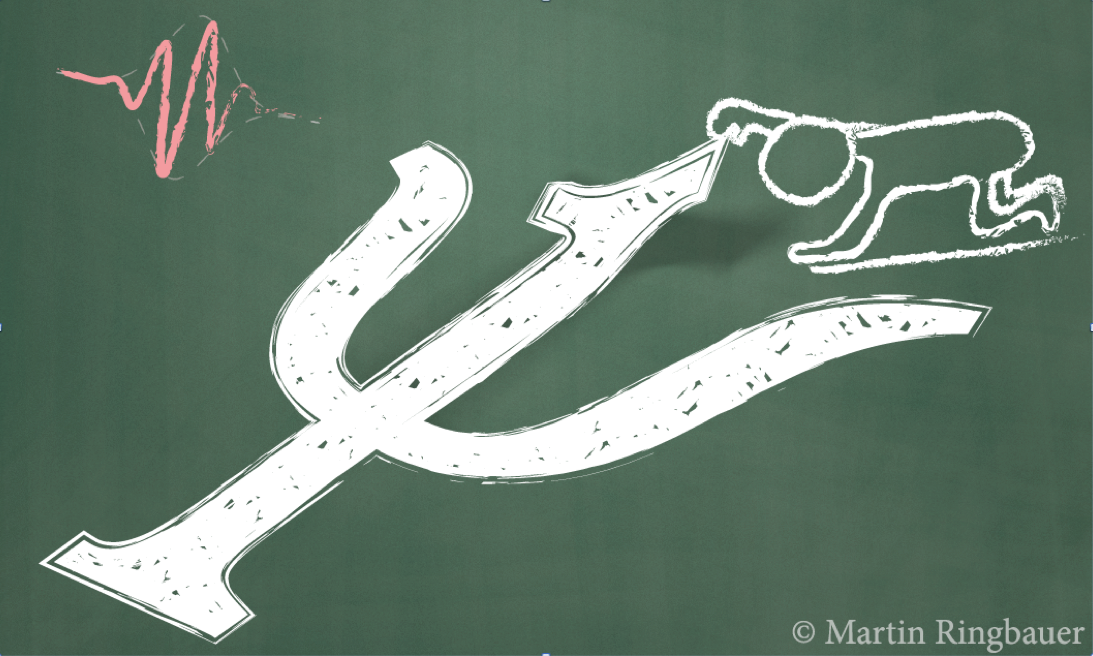Quantum reality check
- Post by: admin
- February 4, 2015
- No Comment
Nothing ever becomes real till it is experienced — John Keats
This quote by John Keats has aged well in time, it wouldn’t be amiss in a debate of quantum physics centuries later. The debate over what is real has been going since the early days of quantum, and even today we don’t really know whether there is an objective—i.e. observer-independent—reality at the quantum level or not.

However, for those of you who do think that there is an objective reality, we have a new result which sheds more light on its nature. There is two major interpretations of the quantum wavefunction, the central object at the heart of quantum mechanics in respect to this underlying reality. Either the wavefunction represents our limited knowledge of that reality, which is called the ψ-epistemic interpretation, or it corresponds to it directly, which we call ψ-ontic.
Our result, published this week in Nature Physics, now rules out maximally ψ-epistemic models of the wavefunction. This work goes back to a paper by Matthew Pusey, Johnatahn Barrett, and Terry Rudolph (PBR), who in 2012 came up with a no-go theorem for ψ-epistemic models. It quickly turned out though that no-go theorems couldn’t be upheld without assumptions which are outside the minimal, or standard, set required for ontological models.
A new approach was then found in a series of theory papers, amongst them two by our co-authors Cyril Branciard and Eric Cavalcanti, which, instead of trying to rule out all ψ-epistemic models, tried to at least put restrictions on them. The key insight was that a central feature of quantum mechanics—the fact that non-orthogonal states cannot be perfectly distinguished—cannot be explained by some supposed overlap of epistemic states in ψ-epistemic models. The Oxford press release on this theory achievement explains this approach quite nicely.
Our theorists proposed that a number of non-orthogonal states in at least three dimensions should be prepared and subsequently measured. The measured statistics allows us to infer the epistemic state overlap for these states, and by comparing them to the quantum predictions we see that the classical overlap doesn’t suffice to explain state indisinguishability.
Experimentally, we achieved this by preparing qutrits and ququarts on photons encoded in their polarization and path degree of freedom. Our results rule out maximally ψ-epistemic models with over 250 standard deviations, and restrict the remaining ψ-epistemic explanations to below a ratio of 0.69. We now aim to further reduce this number, ideally getting as close to zero as possible. Congratulations to everyone involved, and in particular our prolific first author Martin Ringbauer, and our Honours student Benjamin Duffus. What a start into a promising scientic career.
Our paper has already attracted some attention in the media. Our own UQ press release can be found here, and the early birds at NewScientist have featured the result as well. More to come in the following days.
UPDATE: and here’s a news roundup on this story.
NewScientist, “Wavefunction gets real in quantum experiment”
The Conversation, “Schrödinger’s cat gets a reality check”
Vice Motherboard, “New measurements show that the unrealest part of quantum physics is-very real”phys.org, Researchers describe the wavefunction of Schrödinger’s cat [This one wins for reprinting our press release with the most misleading title.]
And another one, in German:
Futurezone.at, “Schrödinger’s Katze ist tot und lebendig”
UPDATE 2:
The New York Times refers to our paper here, in a story by Ed Frenkel.
And, finally, Martin and I were interviewed by the fabulous Zeeya Merali for the FQXI podcast. You can listen to our episode here:
UPDATE 3:
Zeeya Merali who interviewed us for the FQXI podcast has written a Nature News Feature, “What is really real?” that prominently features our work.